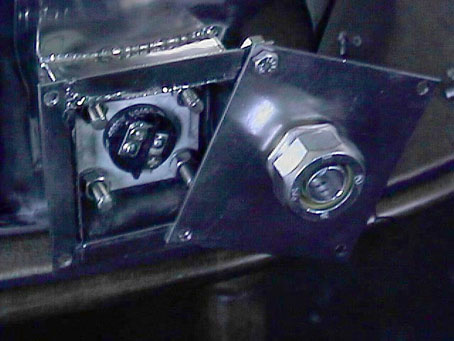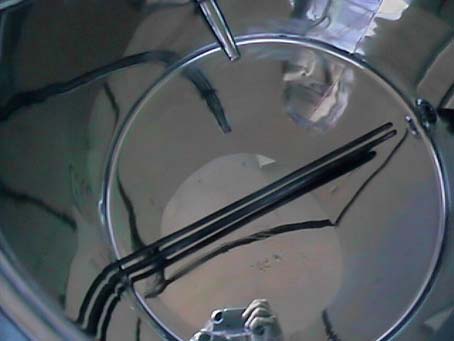| February 1998 Volume
21, Issue 2 How
to mount an electric heating element into the boil kettle
I needed a way to heat the boil kettle
electronically since I planned on using a computer to
control the brewery. I could have gone with gas but that
would have necessitated using electronic ignition and gas
valves. I wanted to do the brewing indoors in any case so
electronic is the way to go.
The heater element is a 4500 watt 220v
bolt on element from Grainger. I got the low density type
to try and reduce scorching. The element is only about
$10 bucks so its cheap. The way this element works is it
has an element inside of a flange with four holes in it
for bolting on to your water heater. I could have used
the screw in type of element but I've heard its hard to
find the stainless couple with the same threads as the
element.
The electrical connection to the element
is in the form of two screws on the back of the element.
The big problem is you don't want these terminals exposed
because if water gets on them ... ZAP! My solution was to
build a cover around the element that could be kept dry
at all times. I welded a box around the element with an
outside lip. By drilling holes into the lip and a flat
cover, I can easily seal the element against the water
and still allow access to the element and the terminals.

The element and cover, shown in the open
position.
In order to get the wires to the
terminal, I went down to my local hardware store and
bought electrical conduit and connectors and mounted them
on to the cover of the element box. The wiring to the
element will go through water proof conduit from the boil
kettle the the relay control which is also sealed.
One of my assumptions with the bolt on
element is that the element would seal against the metal
using the gasket that came with it. I wasn't sure that
the element would seal well around the contour of the
boil kettle since the flange on the element was designed
to fit against a flat surface. When I install the element
and tested it for its seal, a few turns of the bolts
sealed the element to the side and made it water tight. I
will test it again when I turn up the burner.
For safety sake, I might put a small hole
at the bottom of the element box so that if water gets
into the element via leakage, the water will drain rather
than collect in the box. In addition, I'm going to
integrate a 220V GFI into the outlet I get power from so
that if it does short out, it will turn off the power
immediately.

Picture of the element after
installation. The mirror polish also shows the author.
|